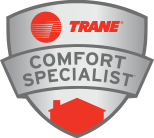Having an energy efficient air conditioning system in Salt Lake City place is a great way to keep cool in the summer for less. But that is far from the only thing you can do to help reduce your energy bills throughout the hottest months of the year. In fact, there are several simple steps you can take to start cutting down on your cooling costs right now and lighten the cooling load that your air conditioning system has to bear.
One of the main things to remember when you are trying to keep your house cool is that every door and window is potentially letting in warmer air from outside and letting the cooler indoor air escape. You can cut down on this considerably if you simply take the time to seal up these access points and any others you are able to find.
Putting up plastic over unused doors and windows and checking all areas of the house for drafts and adequate insulation will dramatically reduce the cost of keeping your house cool in the summer. Also, you can keep the sun from warming up your indoor air by drawing the blinds, particularly on those windows that let in the hot afternoon sun.
Putting up light colored siding and reflective roofing will also do a great deal to keep your overall cooling costs down. That is because these materials are able to direct the heat of the sun away from your house rather than letting it be absorbed so that it can heat up the inside. The vast majority of the heat that your air conditioning system has to remove from your house comes in through your roof and walls, so blocking this access point is extremely helpful in keeping your overall cooling costs down.
All of these are steps you can take to reduce the total cooling load that your air conditioning system has to deal with. But if you want your system to continue to function at peak energy efficiency, you will have to take care of it as well.
This typically means having someone come in once a year to perform a thorough inspection of your Salt Lake City air conditioning system and to clean out any debris that may have accumulated over time. Having this done will make it possible for your air conditioner to continue to function at the highest possible levels of energy efficiency for years to come. Call Design Comfort Heating & Air Conditioning today to schedule an appointment!


